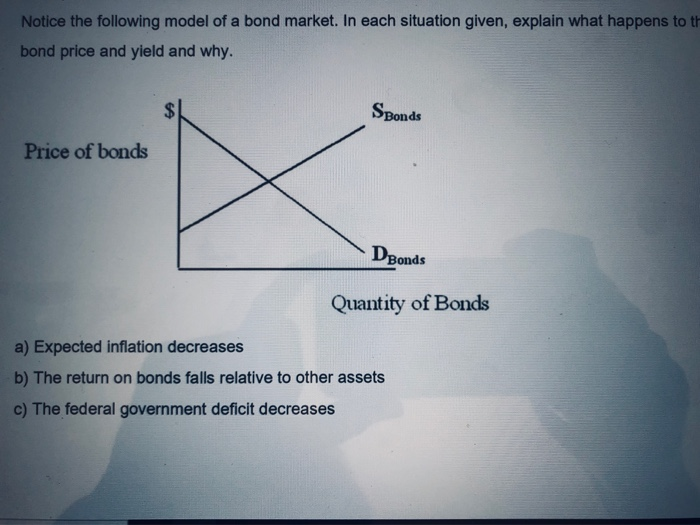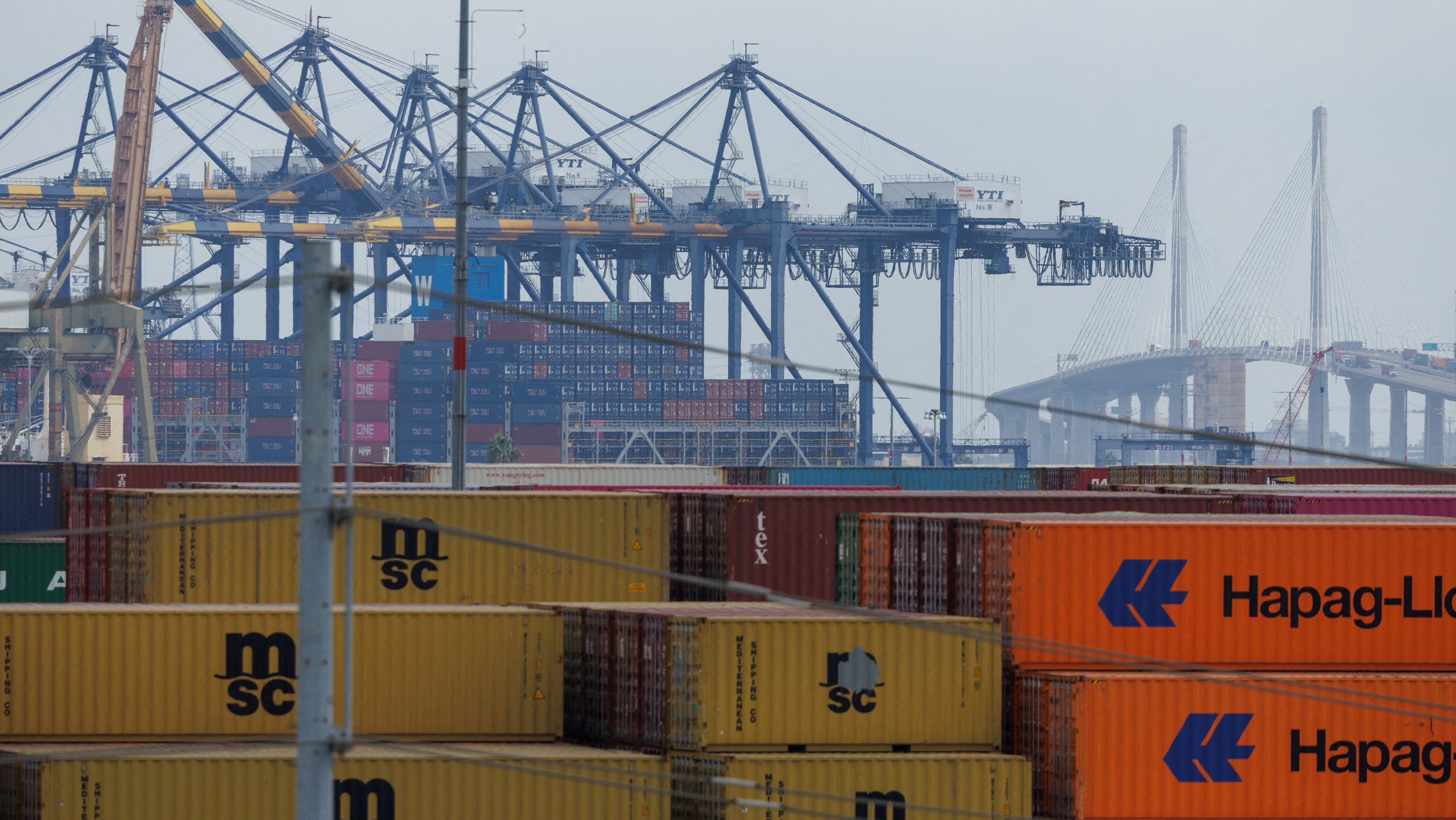Understanding The Bond Market's Response To Tariff Shocks

Table of Contents
Mechanisms Through Which Tariffs Affect Bond Yields
Tariffs introduce significant complexities into the financial landscape, impacting bond yields in several key ways. Understanding these mechanisms is crucial for effective investment strategies.
Increased Uncertainty and Risk Aversion
Tariffs introduce uncertainty into the economic outlook, leading to increased risk aversion among investors. This heightened uncertainty stems from the unpredictable nature of trade wars and their potential impact on various sectors.
- Investors may flee riskier assets, such as corporate bonds, seeking the safety of government bonds. This "flight to safety" is a classic response to economic uncertainty.
- This shift in investor sentiment can drive down yields on government bonds, reflecting their increased demand as a safe haven. Conversely, yields on corporate bonds may increase, reflecting the heightened perceived risk.
- Example: The imposition of steel and aluminum tariffs in 2018 led to a noticeable flight to safety, with U.S. Treasury yields falling while corporate bond spreads widened. The increased uncertainty surrounding future trade relations contributed to this shift.
- Example: The ongoing trade tensions between the US and China have created sustained volatility in the bond market, with investors constantly reassessing risk and adjusting their portfolios accordingly. This highlights the ongoing impact of trade policy on bond yields.
Inflationary Pressures
Tariffs can lead to higher prices for imported goods, contributing to inflationary pressures. This is because tariffs increase the cost of imported goods, which are often incorporated into the production of other goods and services.
- Central banks may respond to inflationary pressures by raising interest rates to cool down the economy. This is a standard monetary policy response to combat inflation.
- Higher interest rates generally lead to higher bond yields, as investors demand a higher return to compensate for the increased risk of inflation eroding the value of their investment.
- The impact on different types of bonds varies. Short-term bonds are generally more sensitive to interest rate changes than long-term bonds. Long-term bondholders may find their returns reduced by an increase in interest rates, so those yields will usually rise less.
- Example: Historically, periods of high inflation have been associated with higher bond yields across the board, as investors seek to protect their purchasing power.
Impact on Economic Growth
Tariffs can negatively impact economic growth by disrupting trade and supply chains. This disruption can lead to reduced business investment, decreased consumer spending and ultimately slower overall economic activity.
- Slower economic growth can lead to lower bond yields as investors anticipate reduced future returns. This is because slower growth usually means lower corporate profits and lower tax revenues for governments, making future bond payments less certain.
- The potential for contradictory effects exists: inflationary pressures push yields upward, while reduced growth pushes them downward. The net effect depends on the relative strength of these opposing forces.
- Example: Studies have shown a correlation between increased trade protectionism (including tariffs) and slower GDP growth in affected countries. This slower growth can translate into lower bond yields.
Sector-Specific Responses Within the Bond Market
The impact of tariff shocks is not uniform across the bond market. Different sectors exhibit varying degrees of sensitivity to these policy changes.
Government Bonds
Government bond yields react to tariff shocks, but the response is complex and depends on several factors. The reaction can be a "flight to safety" into government bonds, lowering yields. However, if the tariffs trigger inflation, yields might rise.
- The country imposing the tariffs and its economic strength significantly influence the reaction. A strong economy might weather the storm, while a weaker one might see its government bond yields increase.
- The global economic climate also plays a role; a global recession might amplify the negative impact of tariffs on government bond yields.
- Example: During times of international trade uncertainty, investors may flock to the perceived safety of US Treasury bonds, driving down their yields.
Corporate Bonds
Different sectors within the corporate bond market are differentially affected by tariff shocks.
- Import-dependent sectors face increased costs and reduced competitiveness, potentially leading to lower credit ratings and higher bond yields.
- Export-oriented sectors may experience reduced demand, leading to similar outcomes.
- Sectors less exposed to international trade may see a relatively smaller impact.
- Example: Companies heavily reliant on imported raw materials might experience increased borrowing costs and see their bond yields rise following the implementation of tariffs.
Emerging Market Bonds
Emerging market bonds are particularly vulnerable to tariff-induced shocks due to their greater reliance on international trade.
- Tariff wars can disrupt their export markets and lead to currency depreciation, increasing their debt burden and raising default risk.
- These vulnerabilities can translate into higher bond yields and increased volatility.
- Example: Emerging markets heavily reliant on exports to developed countries may experience significant capital outflows and rising bond yields during periods of heightened trade tensions.
Predicting and Managing the Bond Market's Response to Tariffs
Predicting and mitigating the impact of tariff shocks on bond portfolios requires a proactive and multifaceted approach.
Analyzing Economic Indicators
Monitoring key economic indicators like inflation, GDP growth, trade balances, and consumer confidence is vital for forecasting the bond market's reaction to tariffs.
- These indicators provide valuable insights into the overall economic health and potential impact of tariffs.
- Changes in these indicators can signal shifts in investor sentiment and guide investment decisions.
- Example: A sharp increase in inflation could signal a potential rise in bond yields, prompting investors to adjust their portfolios accordingly.
Diversification Strategies
Diversifying bond portfolios across different sectors, maturities, and geographies helps mitigate the impact of tariff shocks.
- A well-diversified portfolio reduces exposure to any single sector or region, limiting potential losses.
- Diversification across maturities allows investors to take advantage of varying yield curves and interest rate sensitivity.
- Example: Holding a mix of government, corporate, and emerging market bonds with varying maturities can create a more resilient portfolio.
Utilizing Derivatives
Derivatives such as interest rate swaps and options can be used to hedge against the risks associated with tariff-induced volatility in the bond market.
- These instruments allow investors to manage their exposure to interest rate risk and protect against potential losses.
- However, derivatives also involve complexities and risks that require careful consideration.
- Example: An interest rate swap can help lock in a specific interest rate, mitigating the impact of unexpected interest rate increases driven by tariff-induced inflation.
Conclusion
Understanding the bond market response to tariffs is a complex but crucial aspect of global finance. The impact of tariffs on bond yields is multifaceted, influenced by factors like increased uncertainty, inflationary pressures, and the overall effect on economic growth. Different sectors within the bond market react differently, emphasizing the need for careful analysis and diversification strategies. By closely monitoring economic indicators and utilizing appropriate risk management techniques, including diversification and the use of derivatives, investors can navigate the challenges presented by tariff-related volatility. For a deeper understanding of how to effectively manage your portfolio in the face of tariff shocks, consult with a financial professional and continue to research the intricacies of the bond market response to tariffs and how it affects various bond types.

Featured Posts
-
 Dansk Melodi Grand Prix 2025 Stem Nu Pa Din Favorit
May 12, 2025
Dansk Melodi Grand Prix 2025 Stem Nu Pa Din Favorit
May 12, 2025 -
 Rotorua New Zealand Immerse Yourself In Culture And Geothermal Wonders
May 12, 2025
Rotorua New Zealand Immerse Yourself In Culture And Geothermal Wonders
May 12, 2025 -
 Canada Tariffs Full Removal Still In Question
May 12, 2025
Canada Tariffs Full Removal Still In Question
May 12, 2025 -
 Fan Spots Intimate Detail In Selena Gomezs Photo With Benny Blanco
May 12, 2025
Fan Spots Intimate Detail In Selena Gomezs Photo With Benny Blanco
May 12, 2025 -
 Netanyahu Icc Charges Amidst Prosecutor Sexual Assault Scandal
May 12, 2025
Netanyahu Icc Charges Amidst Prosecutor Sexual Assault Scandal
May 12, 2025
